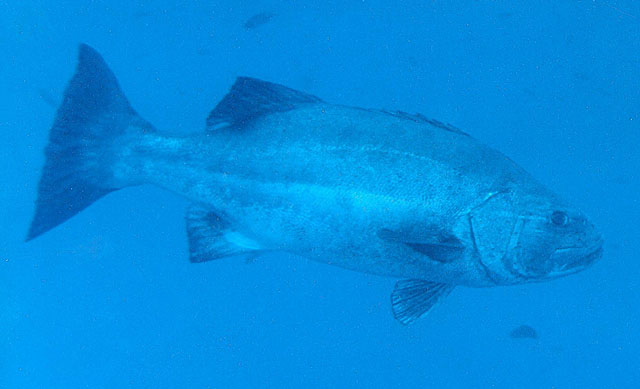|
Stereolepis gigas Ayres, 1859 Giant seabass |

|
|
photo by
John Warren |
| Family: | Stereolepididae (Giant seabasses) | |||
| Max. size: | 250 cm TL (male/unsexed); max.weight: 256 kg; max. reported age: 75 years | |||
| Environment: | demersal; marine; depth range 5 - 46 m | |||
| Distribution: | Eastern Pacific: Humboldt Bay in California, USA to Mexico. Northwest Pacific: Japan (Ref. 559). | |||
| Diagnosis: | ||||
| Biology: | Occur on rock bottoms; near shore, outside kelp beds and along drop-offs (Ref. 2850). Large specimens usually found deeper than 30 m, small ones over sand and in kelp beds mostly from 12-21 m (Ref. 2850). Aggregate for spawning in summer (Ref. 2850). Pelagic spawners (Ref. 56049). Longevity of 90 to 100 years (Ref. 56049) stemmed from speculation on the age of a 557 lb fish caught in 1962, but the oldest age determined from otoliths of a 435 lb fish was 72 to75 years (Ref. 4563). Validated age so far is up to >50 years using bomb radiocarbon (A.H. Andrews, pers. comm.) | |||
| IUCN Red List Status: | Critically Endangered (CR); Date assessed: 30 April 2004 (A1bd) Ref. (130435) | |||
| Threat to humans: | harmless | |||